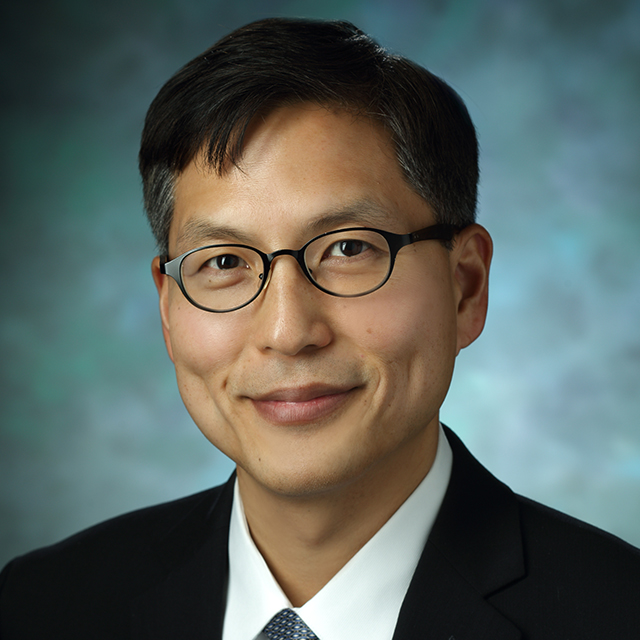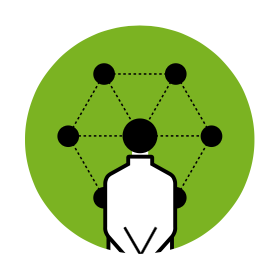
Part 4 of 5: Across the Institution
March 1, 2018
Dome

Clinicians across Johns Hopkins are solving the problem of opioid overprescribing, one patient at a time. They’re recommending nonopioid therapies, warning of opioid side effects, developing treatments that are individually tailored and screening for risk of opioid misuse. Here are just a few examples of the conversations and innovations that are improving patient care.
At All Children’s, A New Resource for Pediatric Pain Patients

The 18-year-old came to the chronic pain clinic at Johns Hopkins All Children’s Hospital with complex regional pain syndrome, a chronic condition that caused swelling, discoloration and sensitivity in both her feet. The pain was so intense that the girl had stopped going to school or socializing.
At the clinic, she received nonnarcotic medications and a nerve block, as well as referrals to a physical therapist and a psychologist, who both helped her learn how to function with the pain. The therapies worked. After months of homeschooling, the girl was able to return to her classroom.
Pain doctors Allison Fernandez, Richard Elliott and Jibin Samuel launched the chronic pain clinic in March 2017 to help children and teens manage pain from injuries or conditions as diverse as complex regional pain syndrome, amplified pain syndrome, sickle cell disease, cancer, rheumatoid arthritis or chronic headaches.
“We try to get our patients to be functional,” says Fernandez, medical director of the All Children’s pain management program. “They might still be in some pain, but we want them to return to school and participate in social activities.”
The clinic, which so far operates just a half day per week, is staffed with the three pain doctors, who work closely with a physical therapist, psychologist and occupational therapist. Treatment could include yoga, acupuncture, massage, meditation, individual counseling and family counseling.
“Patients and families sometimes request opioids,” says Fernandez. “We talk to them and really emphasize the risk of dependence and overdose. In most cases, it’s really not the right treatment for chronic pain, particularly in pediatric patients.”
At Sibley, a Passport to Greater Patient Satisfaction

Inpatients at Sibley Memorial Hospital receive “pain management passports” encouraging them to explore therapies such as meditation, art therapy and low-voltage electrical nerve stimulation.
When patients try these options, they accumulate stamps in their blue booklets, mimicking the way travelers accumulate passport stamps when they visit new countries.
“Each token represents their commitment to exploring options for their own health and well-being,” says anesthesiologist Dhiraj Jagasia, who helped develop the pain management passport with help from the Sibley Innovation Hub in 2016. “Patients and even staff weren’t familiar with what was available.”
With the help of the pain management passport and other interventions put in place by the multidisciplinary pain team, opioid use decreased, says Jagasia. The booklets present alternative options to opioids, he says, “Although if a clinician determines that a patient needs opioids, we’re not going to withhold anything.”
At the same time, patient satisfaction with pain management, as measured by Hospital Consumer Assessment of Healthcare Providers and Systems (HCAHPS) surveys, went from 38 percent to above 90 percent. Starting in 2018, HCAHPS surveys will ask patients to rate how hospitals communicate about pain, instead of rating how they manage pain. The passports help with that communication, says Jagasia.
“The passports give patients a lot of options,” he says. “They show patients that we’re here to help them and we’ll do whatever it takes to relieve their pain.”
At Suburban, Using Data and Conversation to Screen for Opioid Risk

The emergency department at Suburban Hospital screens all patients for risk of opioid misuse or overdoses and determines treatments accordingly.
It was the first in the state, 10 years ago, to start using the Chesapeake Regional Information System for our Patients (CRISP) electronic health information exchange to access a patient’s health and prescribing history across Maryland and Washington, D.C., providers.
Examining those histories is just one way clinicians assess opioid risk. Another is old-fashioned conversation. “We ask about their prescriptions, we ask if they’re depressed or have thought about suicide,” says Barton Leonard, director of Suburban’s emergency department. “We ask about their medications and whether they have a history of substance abuse.”
Specially trained social workers are available around the clock for more formal risk assessments if necessary, Leonard says.
The results won’t keep patients from getting the medications they need. “We do not withhold proper treatment of pain,” says Leonard, “but we limit opioids and we look for nonnarcotic alternatives. We generally do not give more than a three-day supply.”
Patients at risk of overdose receive prescriptions for naloxone, the lifesaving opioid reversal medication.
Leonard has been an emergency medicine doctor at Suburban for 19 years. In that time, he says, “There’s been an increase in addiction and overdose, but also more focus on it. We now have a better, more mindful approach with the help of shared confidential patient data and honest, open discussions.”
At Howard County, 'Not Just Prescribing a Pill'

It had taken a week to find the right combination of medications, plus yoga and healing touch therapy. But Alyson Schwartzbauer, a nurse practitioner at Howard County General Hospital, knew she had succeeded in managing the patient’s cancer pain when she overheard the woman arguing with her mother.
“It was good to see someone who had been miserable feel good enough to fight with her family,” says Schwartzbauer, who has been on the hospital’s pain management team since 2016.
When Schwartzbauer meets a new patient, she starts by talking about their pain management expectations, including how long the therapy will last, and the pros and cons of different treatments. Many tell her they don’t want to take opioids because they worry about side effects and the risk of addiction.
Howard County General Hospital’s pain management program includes referrals for therapies such as yoga and healing touch, said to balance energy fields. “Nonmedication and alternative therapies are often really helpful in managing pain and anxiety,” says Schwartzbauer, who hopes to add music therapy to the hospital wards, inviting a cellist or other musician to play for patients.
When patients with chronic pain are discharged, she might refer them to local pain clinics for treatments such as physical therapy, acupuncture or radiofrequency ablation, which uses electric currents to ease the pain in nerve tissue.
“Pain management is not just prescribing a pill,” she says. “It’s treating the underlying condition. It’s adjusting expectations. It’s thinking in new ways.”
At Johns Hopkins Bayview, Palliative Care and the Art of Listening

David Wu unfolds the small nylon chair he’s been carrying and lowers himself into it so he’s at eye level with the woman in the hospital bed.
Wu, a palliative care physician at Johns Hopkins Bayview Medical Center, gently takes her hand and listens. She says her pain is minimal, and she glows with pride when talking about her young grandson.
But the woman is afraid of falling out of bed, something that happened in a previous care setting. “That sounds like it was a bad experience,” says Wu, who promises to do all he can to make sure it won’t happen again.
Wu, director of the 12-year-old palliative care program at the medical center, works closely with a multidisciplinary team — including social worker Jane Schindler and pharmacist Lynn Frendak — to support patients who are coping with long-term illness, including some who are terminally ill.
He does ask them to rate their pain, and he prescribes opioids when appropriate — but he spends far more time learning about these men and women. “You’re the boss,” he says to one woman recovering from burns, who doesn’t want opioids because they dull her sharp wit.
“Pain is multidimensional,” Wu says at the end of his day. “In patients with serious illness, it can include physical pain, anxiety, interpersonal concerns and existential fear of dying. We can’t just throw pills at it.”
At The Johns Hopkins Hospital, Learning How Each Person’s Pain Is Different

Srinivasa Raja studies pain that defies logic — the ache of an amputated limb, the hypersensitivity to touch that remains after the virus that causes shingles has been banished.
“We are trying to understand how the nervous system is altered in these patients,” says Raja, director of pain research in the Division of Pain Medicine in the Department of Anesthesiology and Critical Care Medicine.
Pain in disease states, he says, can be signaled from peripheral nerves damaged by amputation, shingles or other injuries. It can also initiate from a person’s central nervous system after a spinal cord injury or stroke. Factors such as depression and sleeplessness can multiply it.
Raja, who joined Johns Hopkins in 1981, has devoted his career to understanding how the nervous system sends pain signals and why every person experiences pain differently. To treat pain, he says, “We need to understand what may be happening with that individual patient.”
Over the years, the anesthesiologist and critical care doctor has seen changes in opioid prescribing. For a while, he says, the medications were prescribed liberally for nervous system-based pain from illnesses as disparate as shingles, HIV or diabetes.
Doctors are more cautious now. In 2015, the International Association for the Study of Pain published guidelines that placed opioids as a third line treatment choice, after nonopioid medications and topical treatments.
Raja is now studying how medications that target opioid and cannabinoid receptors might work together to ease neuropathic pain. The research is still in the early stages, though. “The success rate is not high for new drugs,” he says. “There is no simple solution.”
Glossary of Terms
Chronic pain: Pain that lasts beyond the normal time of healing and lacks the warning function of acute pain.
View more opioid and pain definitions.






